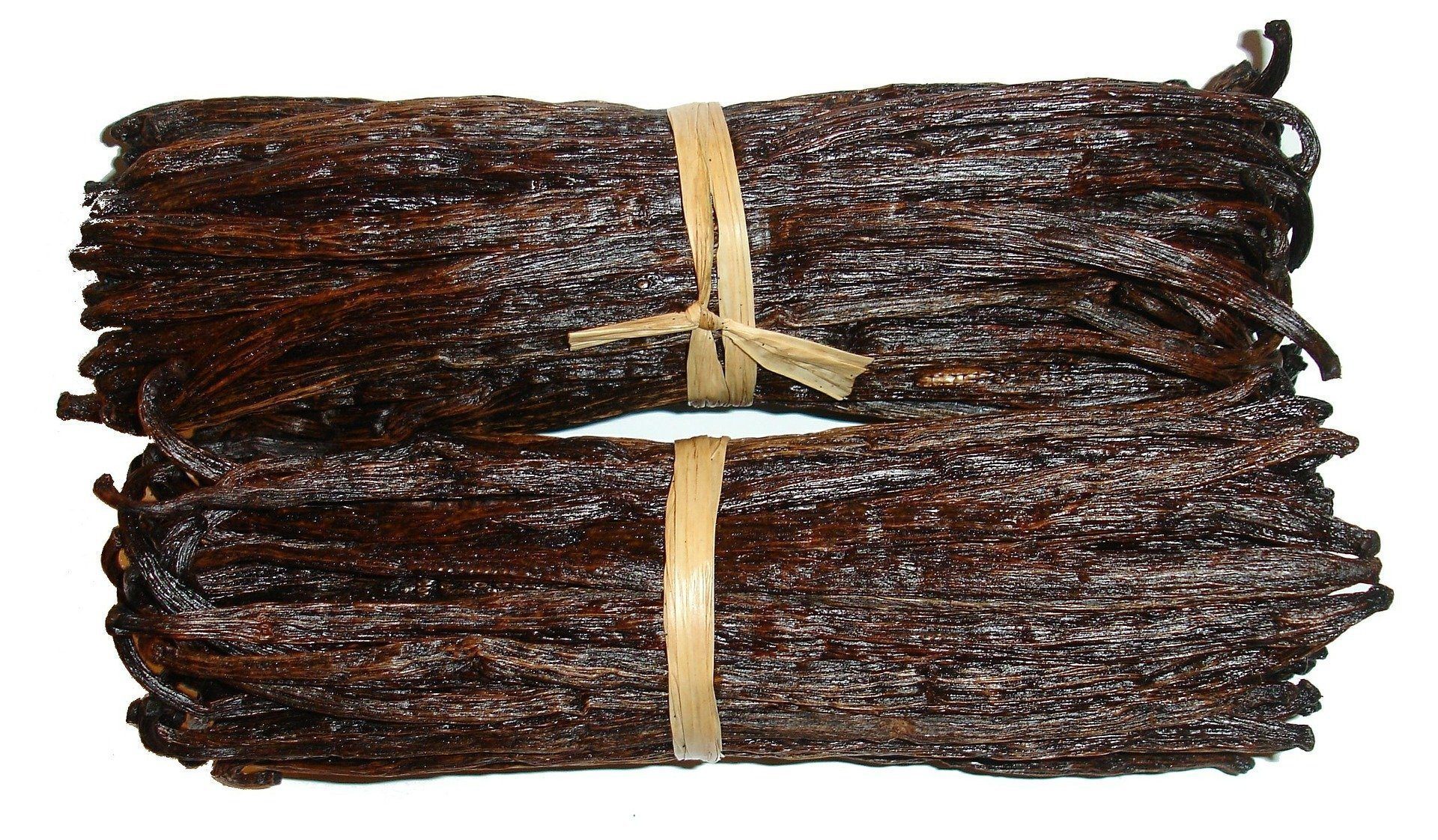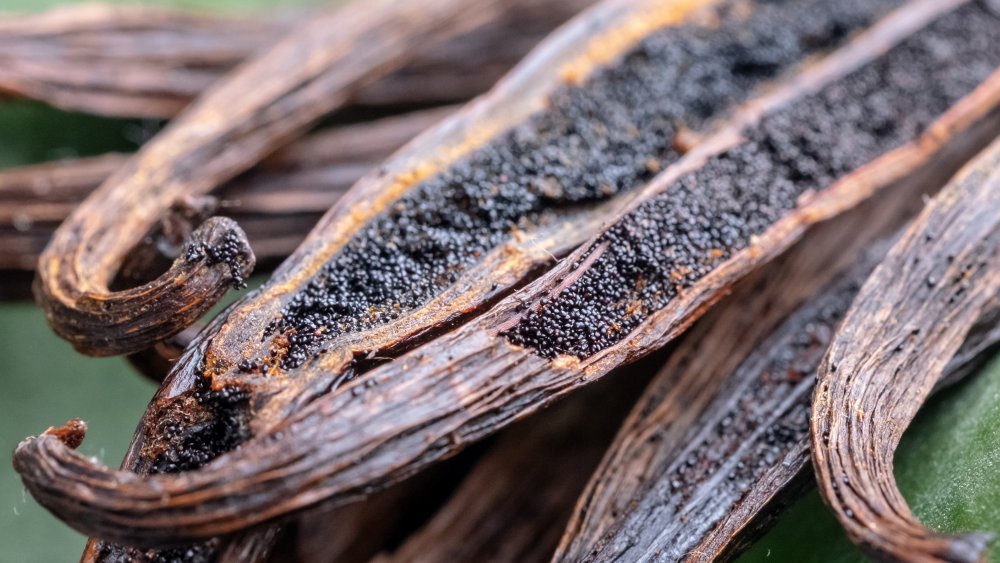If you’ve ever wondered why vanilla beans are so expensive, you’re in the right place. Vanilla, one of the world’s most beloved flavors, comes with a high price tag. But have no fear – I’m here to uncover the mystery behind the hefty price of these tiny beans.
Now, you might be thinking, “Why are vanilla beans so pricey?” Well, my curious friend, there’s a fascinating story behind it. It all starts with the vanilla orchid, a delicate flower that requires meticulous care and attention. As we delve into this vanilla adventure, you’ll discover the reasons that make these beans worth their weight in gold.
So, get ready to embark on a journey to the world of vanilla, where we’ll unravel the secrets of why vanilla beans are so expensive. From the lush vanilla plantations to the intricate process of hand-pollination, we’ll explore every step that contributes to the luxurious and irresistible flavor we all know and love. So, let’s dive in and discover why these tiny beans come with a big price tag.
Vanilla beans are considered expensive due to a combination of factors. Firstly, vanilla beans are hand-pollinated and require labor-intensive cultivation practices. Additionally, vanilla plants only produce a limited number of beans per season. Moreover, vanilla beans require a lengthy and delicate curing process to develop their distinct flavor profile. Lastly, the increasing demand for vanilla and factors like natural disasters and political instability in vanilla-producing regions contribute to the high price. Despite the cost, the exquisite flavor and aroma of vanilla beans make them a prized ingredient in culinary creations.

Why Are Vanilla Beans So Expensive?
Vanilla, with its rich aroma and distinctive flavor, is a beloved ingredient in baking and cooking. However, it’s no secret that vanilla beans can often come with a hefty price tag. Have you ever wondered why vanilla beans are so expensive? In this article, we’ll explore the factors that contribute to the high cost of vanilla beans, from the labor-intensive cultivation process to global supply and demand dynamics.
The Labor-Intensive Cultivation Process
Vanilla beans are derived from the vanilla orchid, a delicate plant that requires meticulous care and attention. The process of growing vanilla beans is labor-intensive, making it one of the factors behind their high price. The vanilla orchid is a vine that needs to be grown on supports, such as trees or poles, to promote healthy growth. Farmers must hand-pollinate each orchid flower, as the plant’s natural pollinators are found only in its native habitat of Mexico. This requires careful work and precise timing, as the flowers are open for a short period of time.
Once the vanilla orchid flowers are pollinated, it takes several months for the vanilla pods to fully develop. During this time, farmers must tend to the plants, ensuring they receive the right amount of sunlight, water, and nutrients. When the vanilla pods are finally ready for harvest, they are carefully handpicked one by one. Sourcing and cultivating vanilla beans require a significant amount of manual labor, increasing their cost.
Global Supply and Demand Dynamics
Another factor that contributes to the high price of vanilla beans is the global supply and demand dynamics. Vanilla is predominantly grown in a few countries, with Madagascar being the largest producer, followed by other regions like Tahiti and Mexico. The global demand for vanilla, however, far exceeds the supply, creating a scarcity that drives up the prices.
In recent years, the demand for natural vanilla has skyrocketed due to an increasing interest in clean label ingredients and the preference for natural flavors in food and beverages. This surge in demand, coupled with natural disasters and crop diseases that have affected vanilla production in countries like Madagascar, has further strained the supply chain, causing a spike in vanilla bean prices.
The Lengthy and Complex Processing Method
After the vanilla beans are harvested, the processing method is another factor that contributes to their high cost. Vanilla beans undergo a complex and time-consuming curing process to develop their characteristic flavor profile. This process involves several steps, including blanching, sweating, drying, and aging the beans. The beans need to be carefully monitored and turned regularly to ensure an even curing process.
The curing process can take anywhere from several weeks to several months, depending on the desired flavor profile. The longer the curing period, the more intense and complex the flavor becomes. This intricate process requires dedication, skill, and patience, adding to the overall cost of vanilla beans.
The Role of Middlemen
When vanilla reaches the market, multiple middlemen are involved in the supply chain, from the farmers to the consumers. Each intermediary adds a markup to cover their costs and make a profit, further increasing the final retail price of vanilla beans. As vanilla beans pass through different hands, the price escalates, making it more expensive for consumers.
In addition, the volatile nature of vanilla prices can also be attributed, in part, to speculation and investment in the market. As the demand for vanilla continues to rise, traders and speculators may stock up on vanilla beans, causing price fluctuations.
Mitigating the Cost: Alternative Vanilla Products
Given the high price of vanilla beans, many consumers look for alternative vanilla products that offer a similar flavor profile at a lower cost. One such option is vanilla extract, which is made by infusing vanilla beans in alcohol. Vanilla extract provides a concentrated vanilla flavor and is widely used in baking and cooking. Other alternatives include vanilla paste, vanilla powder, and vanilla flavorings.
While these alternatives may not offer the same visual appeal and aromatic experience as whole vanilla beans, they can be a more budget-friendly option for those looking to incorporate vanilla flavor into their culinary creations.
The Impact of Vanilla Price on Bakers and Consumers
The high price of vanilla beans can have significant implications for both bakers and consumers. Bakeries and food manufacturers that heavily rely on vanilla may need to adjust their product formulations or find alternative flavor options to maintain profitability. For consumers, the higher cost of vanilla beans may lead to increased prices for baked goods and other products that contain vanilla.
Expert Tips for Buying and Using Vanilla Beans
While vanilla beans may be pricey, they offer a depth and complexity of flavor that is unrivaled by other vanilla products. Here are some expert tips for buying and using vanilla beans:
1. Source from Trusted Suppliers
When purchasing vanilla beans, it’s important to source them from trusted suppliers who prioritize quality. Look for suppliers that work directly with farmers or have strong relationships with vanilla-producing regions. This ensures that you’re getting authentic and high-quality vanilla beans.
2. Check for Moisture and Plumpness
When selecting vanilla beans, look for beans that are plump, moist, and flexible. Avoid beans that are dry or brittle, as they may be past their prime.
3. Store Properly
To prolong the freshness of your vanilla beans, store them in a cool, dark place in an airtight container. Avoid storing them in the refrigerator, as the cold temperature can cause condensation and spoilage.
4. Utilize the Whole Bean
Don’t let any part of the vanilla bean go to waste. After scraping out the seeds, save the used bean pods to infuse flavor in sugar, milk, or cream. You can also make homemade vanilla extract by steeping the bean pods in alcohol.
5. Get Creative
Experiment with different ways to use vanilla beans to maximize their flavor. From infusing them in custards and sauces to adding them to coffee beans for a homemade vanilla coffee blend, the possibilities are endless.
In Summary
Vanilla beans are expensive due to the labor-intensive cultivation process, global supply and demand dynamics, lengthy and complex processing methods, and the involvement of middlemen in the supply chain. These factors contribute to the higher cost of vanilla beans compared to other vanilla products. However, there are alternative vanilla options available, and with careful sourcing and usage, you can still enjoy the unique flavor and aroma of vanilla beans in your culinary creations.
Key Takeaways: Why are Vanilla Beans So Expensive
- 1. Vanilla beans are expensive because they require a long and delicate cultivation process.
- 2. Vanilla plants only bloom for a short period, making pollination challenging and time-consuming.
- 3. Manual pollination of vanilla flowers is required, which involves careful hand-pollination of each individual flower.
- 4. Vanilla orchids are vulnerable to diseases and pests, adding to the cost of production.
- 5. Vanilla beans need to be handpicked at the perfect time and then undergo a lengthy and meticulous curing process.
Frequently Asked Questions
Vanilla beans are known for their distinct aroma and flavor, but they can also be quite expensive. If you’ve ever wondered why vanilla beans carry a high price tag, we’ve got the answers for you!
1. What factors contribute to the high cost of vanilla beans?
The high cost of vanilla beans can be attributed to several factors. First, vanilla beans are hand-pollinated, a labor-intensive process that requires skilled workers. Additionally, vanilla plants are delicate and require specific conditions to grow, making vanilla farming challenging and time-consuming.
Moreover, vanilla beans are not harvested until they are fully mature, which typically takes several months. After harvesting, the beans undergo a meticulous process of curing and drying, further adding to the overall cost. Lastly, the global demand for vanilla has increased significantly in recent years, creating a supply shortage and driving prices up.
2. Are there any environmental factors that impact the price of vanilla beans?
Yes, environmental factors have a significant influence on the price of vanilla beans. Vanilla plants require specific climates and growing conditions, with areas like Madagascar and Tahiti being the primary producers. Natural disasters, such as cyclones or droughts, can devastate vanilla crops, leading to decreased supply and higher prices. Climate change also poses a threat to the future availability of vanilla beans.
Furthermore, deforestation in vanilla-growing regions can harm the ecosystem and disrupt the delicate balance necessary for vanilla plants to thrive. Conservation efforts and sustainable farming practices are crucial for protecting the environment and maintaining a stable supply of vanilla beans.
3. Is the process of cultivating and harvesting vanilla beans time-consuming?
Yes, cultivating and harvesting vanilla beans is a time-consuming process. It typically takes up to three years for a vanilla plant to begin producing beans after being planted. The delicate pollination process must be done by hand, and each flower needs to be individually pollinated. This requires skilled workers and meticulous attention to detail.
Once the beans are pollinated, they go through a lengthy maturation period, usually around nine months. After harvesting, the beans undergo a labor-intensive process of curing, which can take several months. The beans are dried, sorted, and aged to develop their distinct aroma and flavor. These time-consuming steps contribute to the higher cost of vanilla beans.
4. Are there any alternatives to using real vanilla beans?
While real vanilla beans offer a unique flavor profile, they can be expensive. Fortunately, there are alternatives available. Vanilla extract, for example, is a common substitute for vanilla beans. It is made by extracting the flavors from vanilla beans and diluting them with alcohol. Vanilla extract provides a concentrated taste of vanilla and is more affordable compared to buying whole vanilla beans.
Another alternative is vanilla bean paste, which is a blend of vanilla bean seeds, vanilla extract, and a sweetener. This paste is often used in baking and provides a similar flavor to vanilla beans. While these alternatives may not offer the same visual appeal as using whole beans, they are more cost-effective options.
5. How can I ensure that I’m purchasing high-quality vanilla beans?
When purchasing vanilla beans, there are a few factors to consider to ensure you’re getting a high-quality product. First, look for plump, moist, and flexible beans. Avoid any beans that appear dry or brittle, as this could indicate poor quality or age.
Additionally, consider the origin of the vanilla beans. Regions like Madagascar, Tahiti, and Mexico are known for producing high-quality vanilla beans. Look for beans from reputable sources or brands that prioritize sustainable and ethical farming practices. Lastly, check for strong and aromatic scents, as this indicates the beans are fresh and of good quality.

Why Vanilla Is So Expensive | So Expensive
Summary
Vanilla beans are expensive because they require a lot of time and effort to grow and harvest. The process involves hand-pollination, careful cultivation, and a lengthy curing process. Additionally, natural disasters and fluctuations in supply also drive up the price. Vanilla’s popularity in baking and cooking also increases its demand.
Furthermore, the demand for natural vanilla has increased, but the supply struggles to keep up. This is due to the long maturation period of the vanilla orchid and the difficulties in cultivating it. The complex and delicate process of vanilla production makes it a luxury ingredient that comes at a higher cost.

